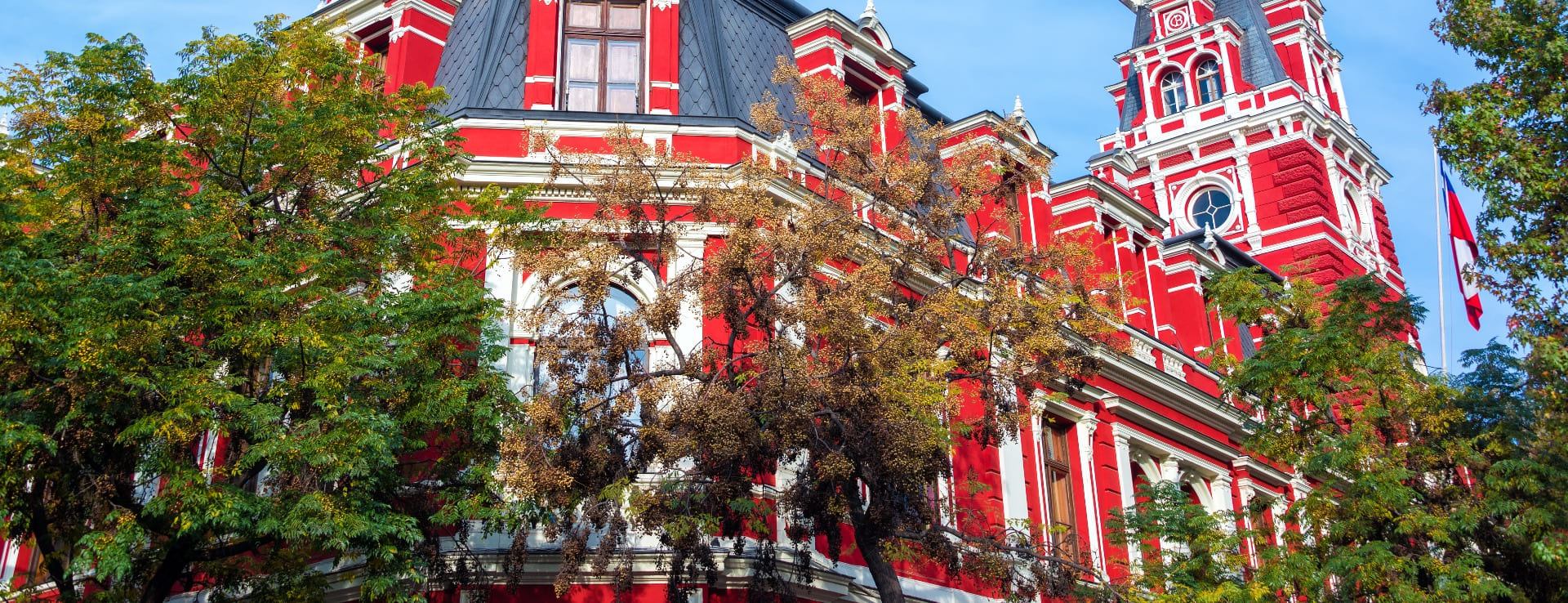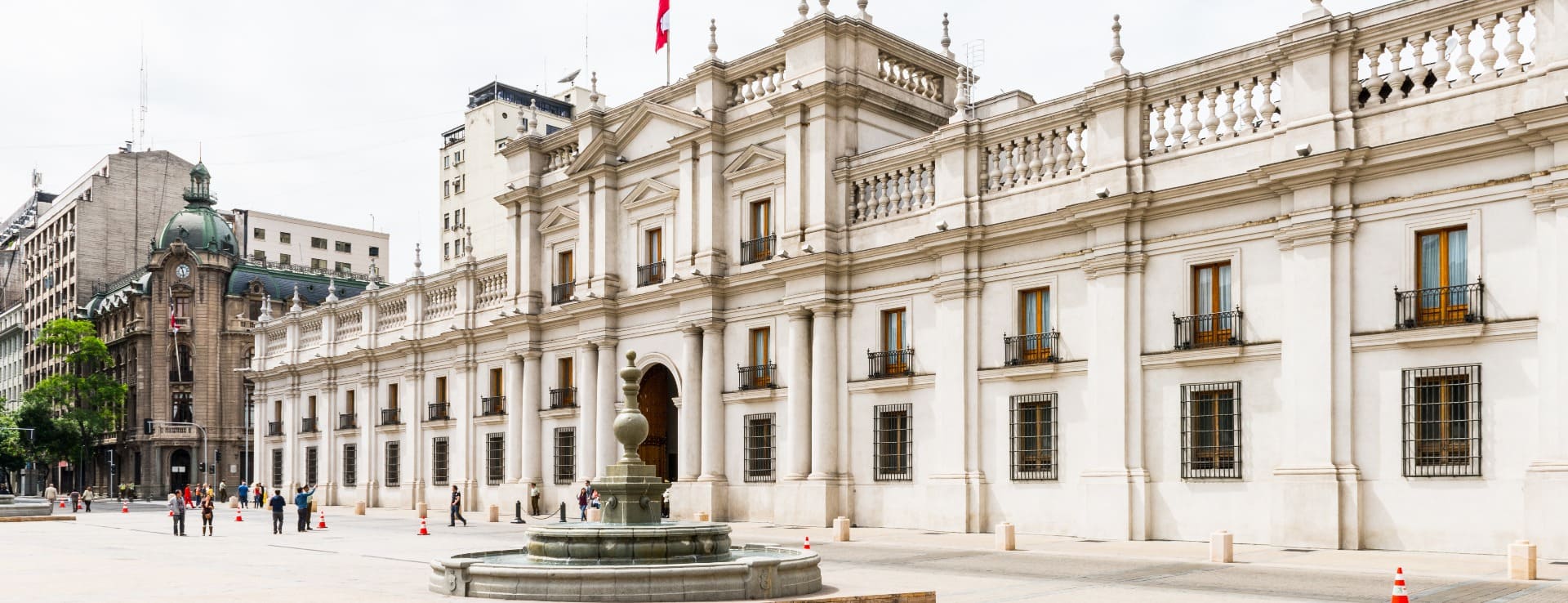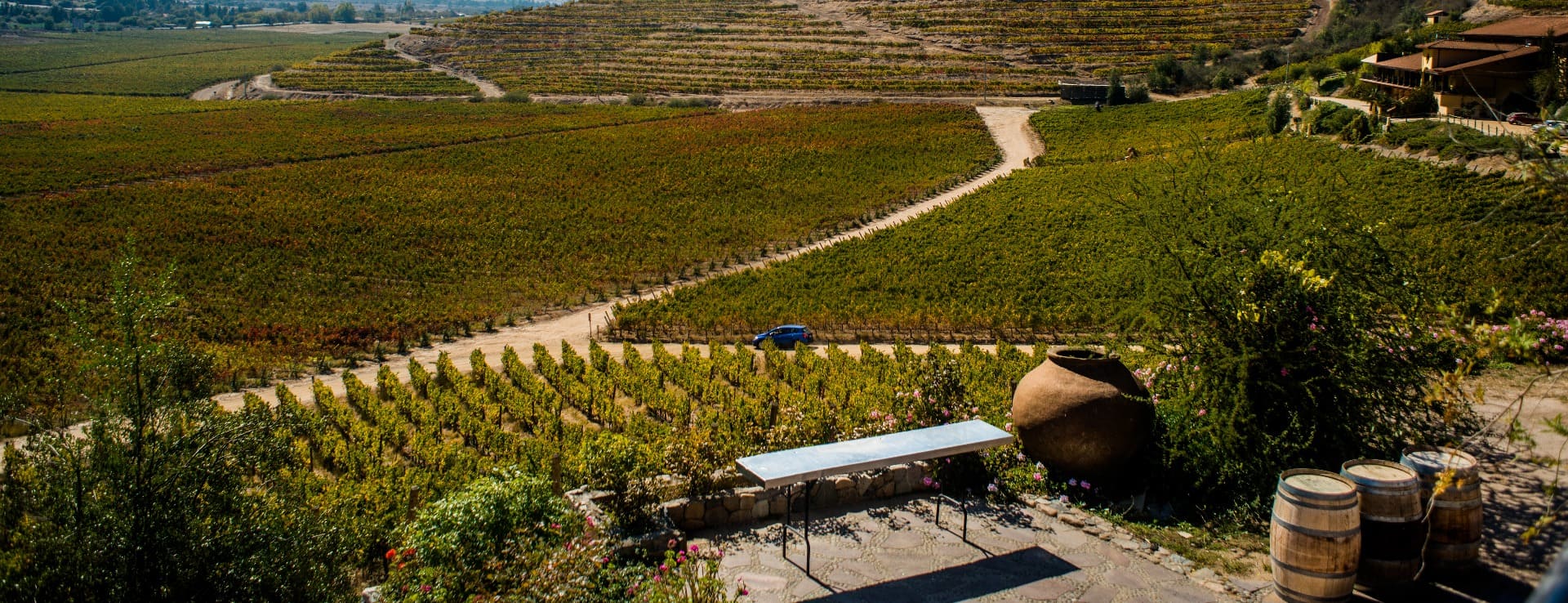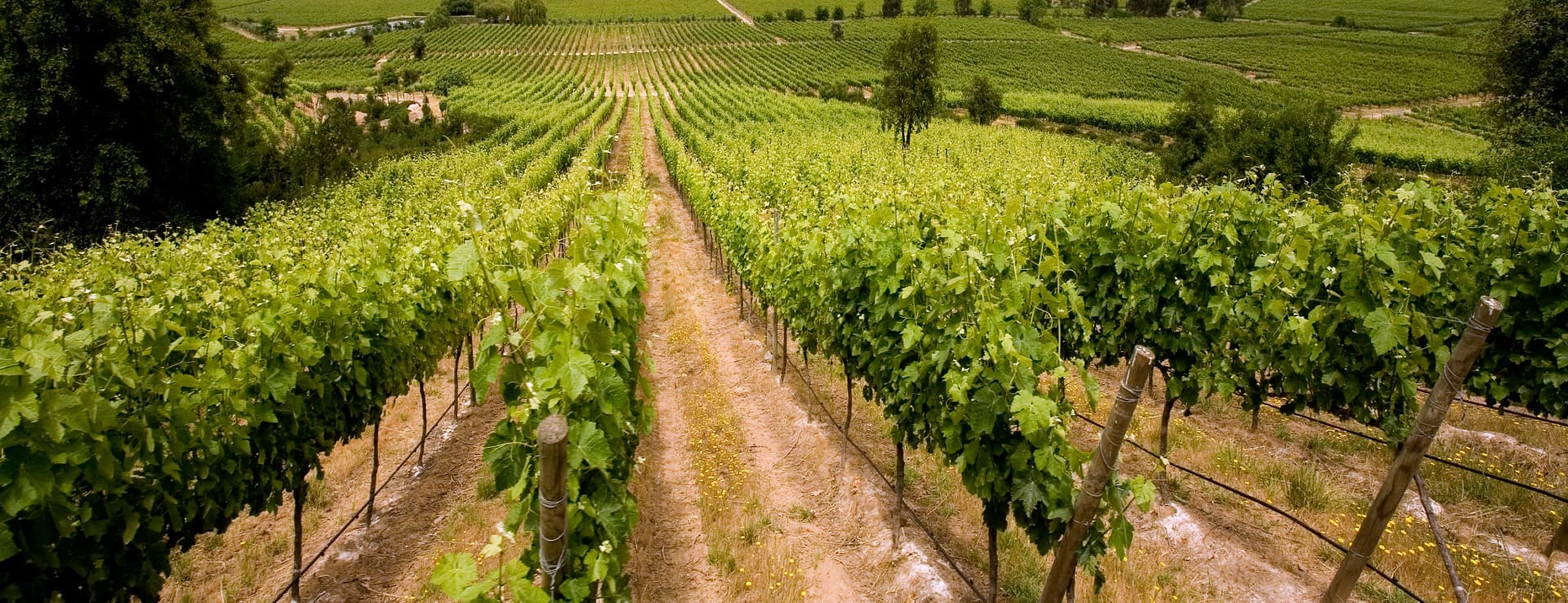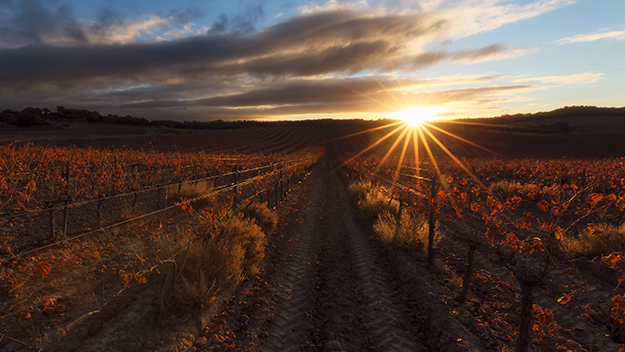Find your winery or vineyard
Infographic of the Denomination of Origin
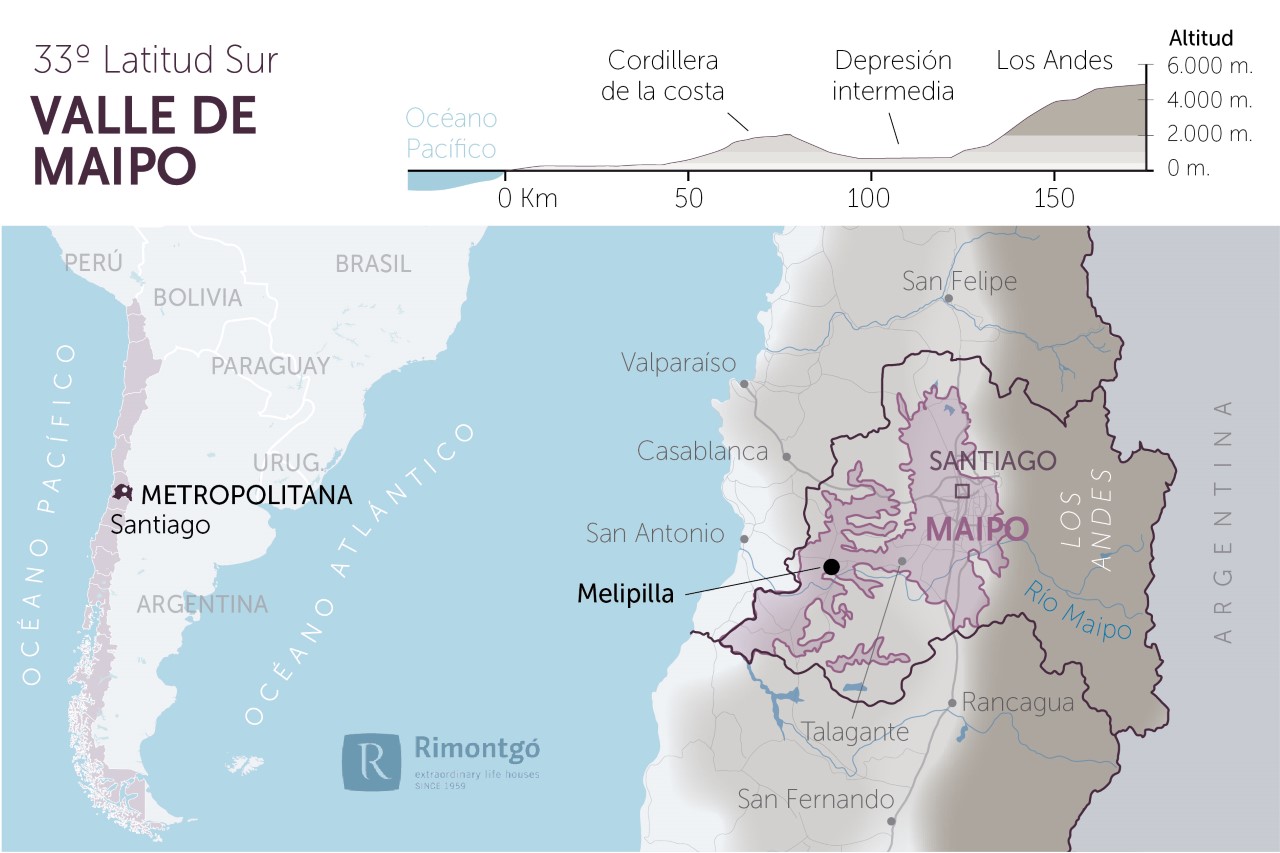
Change to imperial units (ft2, ac, °F)Change to international units (m2, h, °C)
Number of wineries (2017):
62
Total surface area:
13.000 ha32.123 ac
Altitude of the vineyards:
Min: 150m
Max: 800m
Min: 492ft
Max: 2.625ft
Temperature:
Min: 3º
Max: 30º
Min: 37°F
Max: 86°F
Yearly rainfall:
313 l/m229 l/ft2
Santiago
Santiago is both the capital of the Metropolitan Region and the country, so it concentrates a large part of the administration and services of the region. Santiago de Chile, founded by the conqueror Pedro de Valdivia, is the most populated city of the country with more than six million people and is considered a safe city offering an excellent quality of life. Santiago is situated on a depression and is characterised by a city plan in which large avenues and the presence in some neighbourhoods of an assortment between the former Spanish and French conquers’ houses, stately homes and Modernist-style mansions.
As for the city of Melipilla, capital of the homonymous province was founded in 1742 by the Spanish military and politic José Antonio Manso de Velasco, who also occupied the positions of Chile’s Governor and Viceroy of Peru, under Charles V mandate. Among the most popular charms which surround the city is found Pomaire, a small town with 10,000 inhabitants close to Melipilla with an important craftwork dedicated to pottery, a tradition that dates back to times before the arrival of the Spanish. Another of the touristic charms for those who visit Melipilla is the so-called La Ruta del Queso (Cheese Route) that allows to have first-hand knowledge the production process of the elaboration of some of the most popular cheeses in the Chilean country.
Finally, Talagante city is located on the shores of the Mapocho and Maipo rivers and its main connection apart from Santiago is with the San Antonio’s Port. Talagante, capital city of the Talagante province, dates from 1837, official year of its foundation after the earthquake suffered. In addition to agriculture and, as it happens with Melipilla, pottery is one of the most appreciated craftworks in Talagante and its pottery have a great value not only in Chile but also worldwide. Anecdotally, both the Pope John Paul II as well as Pope Benedict XVI received pottery produced in Talagante as a souvenir from their visit to the Chilean country.
HISTORY OF WINE
The first planted vineyards in Chile were brought in the mid-1550’s by missionisers from Spain, who needed to produce wines for the Holy Mass celebrations. These Spanish varietals produced Chilean wines for several years.
In the 19th century, Chile became independent from the Spanish laws and the Chilean upper classes start travelling to Europe having the opportunity to appreciate French wines. With the beginning of the importation of the great Bordeaux wines, started the modern era of production of this southern country.
Some of the wealthiest families of Santiago, interested in the mining industry, initiated projects in the winemaking sector. Among them Toro, Undurraga, Concha and Cousiño. Also, in the 19th century date are found the first plantations of Cabernet Sauvignon impelled by Silvestre Ochagavía. The development of the irrigation canals with the aim of taking advantage of the waters of the Maipo and Mapocho rivers is the key in the modernisation of the wine production of this area in which small sized boutique wineries and large winery projects such as Concha and Toro (the largest Chilean winery) coexist.
When Allende died in 1973, Augusto Pinochet ended the nationalisation process and gave back the vineyards to the historic families. Unfortunately the following seventeen years brought the civil war but when democracy and stability were restored in Chile, international producers wanted to invest in the Chilean lands, thanks to its Mediterranean climate and that draw the attention of wine companies from France, United Estates, Spain, etc.
International companies such as Miguel Torres and Domecq from Spain and Mouton Rothschild and Lafite Rothschil from France became present. They provided modern technology, oenologists with in-depth knowledge, all of them together with a new regulation and legislation in the wine production. Chile, quickly occupied an important position among the worldwide wine producers thanks to the association that consumers worldwide made with the well-known French varietals at a very good price.
WINES AND WINERIES
In addition to the vineyards above mentioned, there are also projects focused on organic wines such as those of the wineries Antiyal, Viña Emiliana and Pargua. Other wineries present in this area are Haras de Pique, Santa Carolina, Veramonte, Concha y Toro, Santa Alicia, Tarapacá, Perez Cruz, Aquitania, William Fevre, Odfjell Vineyard, Ventisquero, Santa Rita, Cousiño Macul, Undurraga, Barón de Rothschild Almaviva and Viña Catrala. Special mention should be made of Viña Carmen, a winery that rediscovered the Carménère variety in 1994, which was thought to have become extinct due to the phylloxera plague in Bordeaux in the 19th century. Two years later, this winery developed the first Chilean project based on this rediscovered variety.
POINTS OF INTEREST
Thanks to the international airport and the presence of national and international companies as well as the Santiago Stock Exchange, Santiago de Chile is an economic and touristic centre. Among its most important touristic charms are the Metropolitan Cathedral or La Moneda Palace, National Historic Museum or the National Museum of Fine Arts. Within close proximity to the city, in the outskirts of the Andes, are found several ski resorts that year after year attract a large number of national tourists interested in the ski practise.
D.O./Valle (wine regions)
Discover more wineries and vineyards for sale in these wine regions in Chile
Subscribe to our mailing list to receive news about wineries and vineyards.

